Frontier
Frontier
Frontier life in Tennessee could be very difficult. Often settlers had to clear land of trees before they could even build a place to live. Food had to be grown or killed. In the early years, settlers also lived in constant danger from Indian attacks.
The frontier phase of Tennessee history took place from 1768 to around 1828. The first settlers moved into East Tennessee in violation of the Proclamation of 1763, which stated that land west of the proclamation line (most of what is now Tennessee) was reserved for Indians, in this case the Cherokee.
Settlers continued moving westward in the state, settling in Middle Tennessee by 1779. In 1819, John Overton, James Winchester, and Andrew Jackson bought land and established the city of Memphis in West Tennessee. By the time Jackson was elected president in 1828, Tennessee was settled enough to no longer be considered a Frontier.
Most settlers came in groups to take advantage of cheap land as land in the east became more settled. Once in Tennessee, they faced the Indians who already lived here. For these Cherokee, Shawnee, and Choctaw tribes, Tennessee was part of the Middle Ground—an Indian-controlled area between British, French, and Spanish claims. To the settlers, the Indians stood in the way of progress.
With few options, Indians tried to negotiate , sign treaties, and even used violence to hold on to their lands. Regardless of their strategies, they could not hold back the tide of new settlers.
Land speculators aggravated the situation by encouraging people to move to the area. People purchased the lands, hoping to become wealthy.
Land speculators aggravated the situation by encouraging people to move to the area. People purchased the lands, hoping to become wealthy.
As the state became more settled, commerce, industry, and agriculture began to thrive. By the 1820s, Tennessee began to produce powerful politicians who would change the course of the nation.
Acknowledgments
Acknowledgments
Teacher's Page
Picture Credits:
- Painting entitled "Over-Mountain People," by Louis Glanzman in 1977. Early settlers in Tennessee had to job down trees in order to build their homes. Often other families would help since rolling the logs up to the top was definitely a two person job. The painting and four others were commissioned by the National Park Service for their book "With Fire and Sword," and later purchased by the Tennessee State Museum, Collection # 80.48.1
- A contemporary photograph of the Appalachian Mountains in Tennessee. Tennessee State Photographic Services
- This is a recreated one-room cabin at the Tennessee State Museum. The rifle and clothes would have been hung on the walls which are the inside of the logs used to make the cabin. All cooking utensils are kept on the floor near the hearth. The table and chairs, while period, are probably nicer than most people living in a one-room cabin would have. Tennessee State Museum Collection
- A photograph of the interior of Fort Loudoun. This is a reconstructed of the original fort. Fort Loudoun was built by the British during the French and Indian War, but later surrendered to the Cherokee who had set siege to it. Photo by Bill Porter, Wikimedia Commons
- A photograph showing how many of the early roads would have looked to the pioneers who traveled them. The men were in front with guns ready in case of an attack while another man and woman ride behind them. This photograph was taken of reenactors at Bledsoe's Fort Historic Park in Sumner County. Photograph courtesy of the State of Tennessee Photographic Services
Acknowledgments:
Any views, findings, conclusions, or recommendations expressed in this web site do not necessarily reflect those of the National Endowment for the Humanities.
Frontier >>
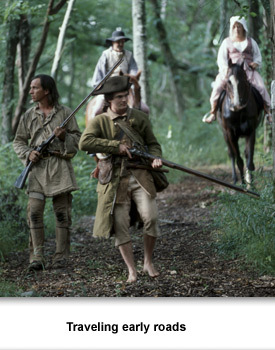
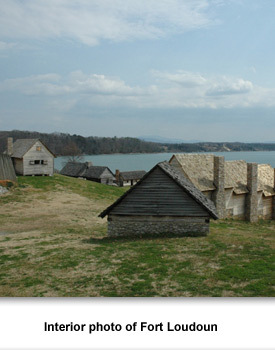
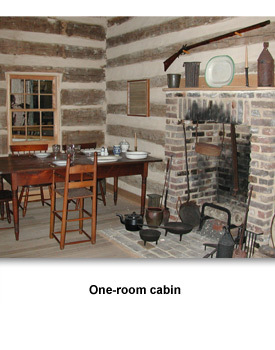
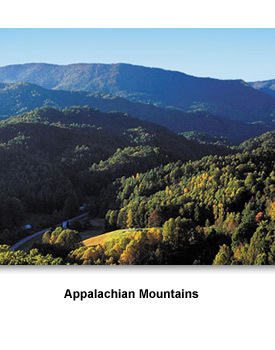
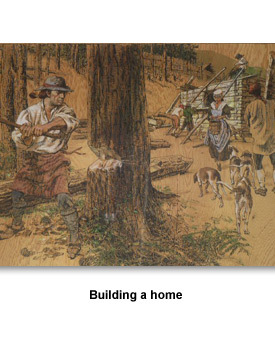
 Sponsored by: National Endowment for the Humanities
Sponsored by: National Endowment for the Humanities